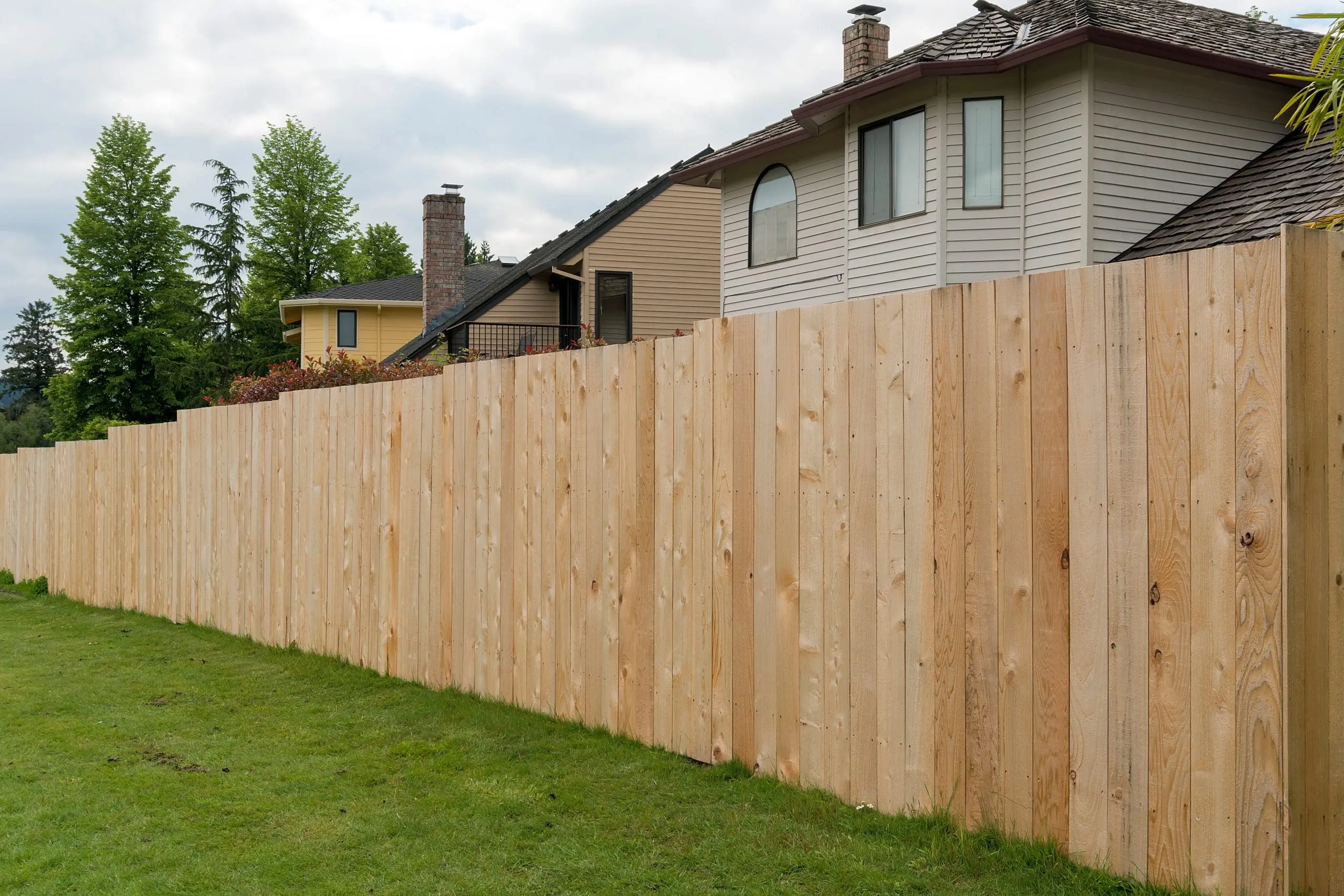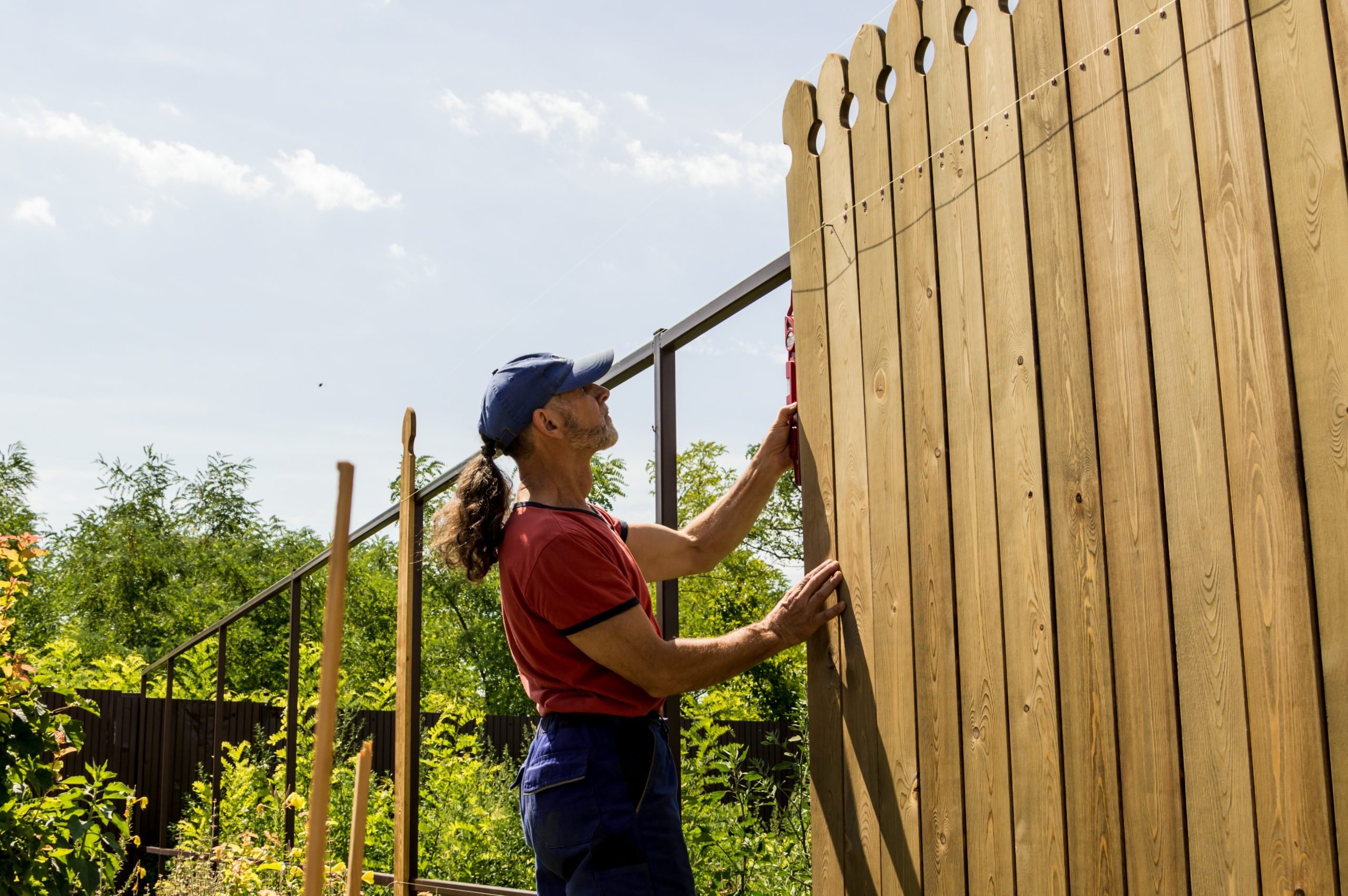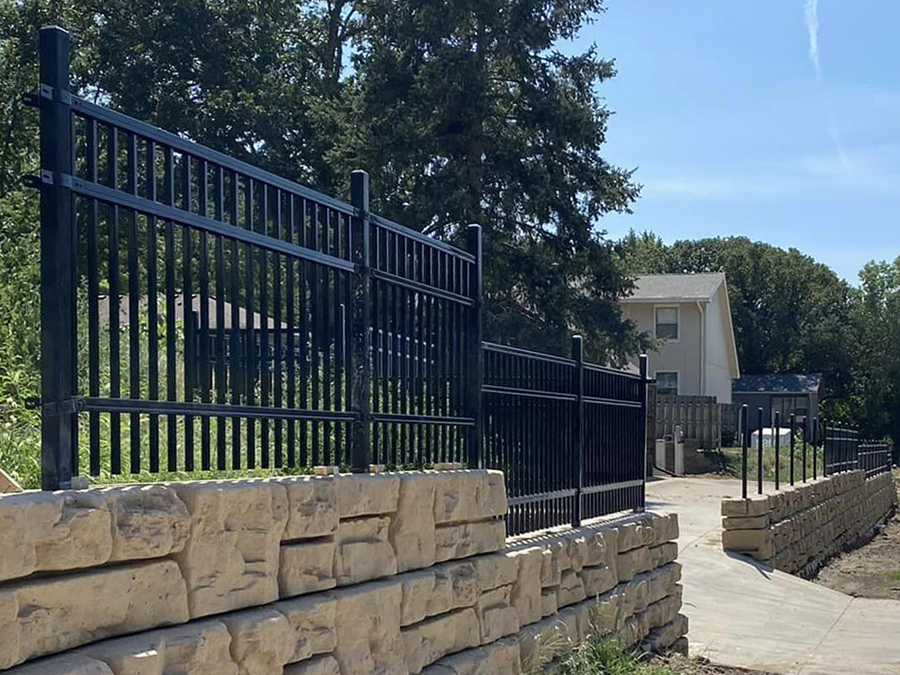Upgrade Your Outdoor Living Space with a Skilled Deck Builder
Upgrade Your Outdoor Living Space with a Skilled Deck Builder
Blog Article
Exactly How to Recognize Common Issues That Require Immediate Fencing Repair Service
It is essential to identify problems prior to they come to be bigger problems when it comes to keeping your fencing. Frequently inspecting for indicators of deteriorating timber, leaning panels, or rust can save you money and time in the future. You may not understand how climate and parasites can endanger your fencing's honesty. Allow's explore the typical indicators that show your fencing needs prompt focus, so you can maintain your residential or commercial property protected and looking its finest.
Signs of Rotting Wood in Wooden Fences
Have you noticed your wooden fence looking a bit shabby? If so, it may be time to examine for signs of rotting timber. Analyze the base of the posts and panels for soft places. If you push on the timber and it feels mushy or collapses, that's a clear sign of rot. Next off, try to find discoloration or dark spots on the timber-- these often signal wetness damages. Take notice of any kind of peeling off paint or coating, as this can expose the timber to more degeneration. Additionally, a poignant, mildewy scent can show fungal development. Do not fail to remember to inspect links and joints; if they hang or breaking down, the wood below is most likely jeopardized. By capturing these indications early, you can prevent a lot more considerable damages and maintain your fence standing solid. Normal upkeep is essential to extending the life of your wooden fence.
Leaning or Tilting Fence Panels
If you've seen your fence panels leaning or turning, it's important to recognize what triggered it. This problem might show underlying structural damages that requires your attention. Allow's check out the typical reasons and the repair choices readily available to obtain your fencing back fit.

Reasons For Leaning Panels
When you observe your fencing panels leaning or turning, it's frequently an indicator of underlying issues that need dealing with. One common reason is inadequate drain; excessive water can deteriorate the soil around the fence posts, weakening their support. One more culprit can be strong winds or tornados that press versus the panels, specifically if they're not correctly secured. Furthermore, the all-natural settling of dirt with time can trigger posts to shift, causing a tilt. Insects, like termites, can compromise the integrity of wooden panels, causing them to lean too. Ultimately, inadequate installment practices may lead to panels not being securely established, leaving them at risk to leaning under stress. Address these problems without delay to preserve your fence's stability.
Indications of Structural Damage
Noticing turning or leaning fence panels can be disconcerting, as these concerns commonly suggest structural damage that needs immediate focus. When your fencing begins to lean, it might signal that the messages are shifting or that the soil around them has actually deteriorated. Pay close focus to spaces between panels or posts, as these can additionally recommend instability. deck builder. Additionally, check for splits or splintering in the wood, which can weaken the general structure. If you discover rust or corrosion on steel components, it might endanger the integrity of the fencing. Remember, overlooking these indications can result in much more extreme damage down the line, so it's vital to analyze the scenario quickly and take activity before it worsens
Repair Service Options Available

Corrosion and Deterioration in Metal Fences
If you possess a steel fence, you might see rust and corrosion sneaking in over time, specifically if it's exposed to dampness. These problems not just impact the look of your fencing but can likewise jeopardize its architectural stability. To determine corrosion, search for reddish-brown spots or patches, which indicate the metal is oxidizing. Deterioration can spread out promptly if left neglected, weakening the fencing and leading to pricey repairs.To take on corrosion and rust, you should clean the affected locations with a cord brush and use a rust-inhibiting guide. As soon as the guide dries out, consider repainting the fence with a weather-resistant paint to secure it better. Regular maintenance, such as examining for signs of corrosion and touching up paint as required, will certainly help prolong your fencing's life-span. Addressing these issues immediately assures your metal fence continues to be solid and aesthetically appealing for years to come.
Cracks and Splits in Plastic Fencing

Root Causes Of Vinyl Damage
Plastic fencing is popular for its longevity, yet it can still experience fractures and splits because of various factors. One major reason is severe temperature fluctuations. It can damage the material over time when vinyl expands in the warm and agreements in the chilly. In addition, exposure to severe sunlight can cause UV degradation, making the plastic brittle. Physical effects, like unexpected accidents or hefty branches, can also produce splits. Poor setup or making use of low-quality products can aggravate these problems. Age plays a role; older plastic secure fencing is much more vulnerable to damages. Routine assessments my explanation can aid you recognize these elements prior to they lead to considerable issues. Take positive measures to ensure your fence continues to be solid and intact.
Repairing Cracks Effectively
Fractures and splits in your vinyl secure fencing can be concerning, addressing them promptly can stop further damage and keep the fencing's look. First, assess the dimension of the crack. For tiny cracks, a vinyl repair work set usually includes adhesive that can bond the edges, providing a smooth solution. Tidy the location completely before using the sticky, guaranteeing it adheres effectively. For bigger divides, you might require to use a vinyl patch. Cut the spot to size, use adhesive around the sides, and press it strongly onto the split. Allow it to cure as per the maker's directions. Regular maintenance and quick repair work can expand your fencing's life-span, keeping it looking great for years to come.
Loosened or Missing Fence Articles
Absent or loose fence posts can threaten the stability of your entire fence framework. If you notice any kind of blog posts wobbling or leaning, it's necessary to address the concern right away. Look for any kind of signs of movement, as this can lead to further damage over time. You can conveniently examine the trouble by offering each message a gentle shake-- if it really feels unsteady, it's time to take action.For missing posts, you'll need to replace them as quickly as possible to preserve your fencing's honesty. Make certain they're safely secured in the ground with concrete or gravel for added security when you mount new posts. If a blog post hangs, tighten it by adding extra support or driving it deeper right into the ground.Ignoring these concerns can bring about bigger issues, like voids in your fence and even complete collapse. Keep an eye on your posts and stay aggressive about repairs!
Damage From Weather and Natural Elements
Weather condition and natural site web environments can unleash havoc on your fencing, bring about various kinds of damage that require prompt interest. Heavy rain can cause wood to rot, making it unsteady and weak. Snow build-up might flex or break panels, while strong winds can root out fencing articles or create sections to lean.If you discover cracks or splintering in wooden fencings, it signifies drying because of intense sun direct exposure. Steel fences can corrosion if safety coverings put on off, particularly in seaside or humid areas.Inspect your fence on a regular basis after storms or severe climate to capture any damages early. Dealing with these issues promptly can save you from pricey fixings down the line. Don't wait till a tiny trouble becomes a major one; remain aggressive and keep your fencing in leading shape to keep both capability and aesthetic allure.
Bug Infestation and Termite Damage
It's crucial to act rapidly to avoid more damage when you see signs of insect invasion or termite damages. Seek mud tubes along your fencing or hollow-sounding timber, as these indicate termites are at job. You could additionally see small openings or frass, which is termite droppings resembling sawdust. If you identify any one of these signs, it's time to analyze the damage.Don' t wait until it's also late; pests can endanger your fencing's integrity. Check the surrounding location for ants or beetles, as they may be adding to the problem. If you believe a problem, take into consideration calling a parasite control specialist to treat the issue.repairing and validate or replacing damaged sections of your fence promptly not just recovers its stamina yet also protects against parasites from spreading additionally. Remain attentive to keep your property safe and pest-free.
Regularly Asked Questions
Just how Usually Should I Check My Fencing for Damages?
You must check your fence a minimum of two times a year, preferably during spring and autumn. Routine checks assist you detect damages early, saving you money and time on fixings while preserving your residential property's look and security.
Can I Repair a Fence Myself or Hire an Expert?
You can most definitely fix a fencing on your own if you have the right devices and skills. However, hiring an expert guarantees high quality job and saves you time, specifically for complex repair services or comprehensive damage.
What Equipment Are Needed for Basic Fence Fixings?
For fundamental fence repair services, you'll require tools like a hammer, screwdriver, pliers, a saw, a level, and gauging tape. deck builder. Relying on the fixing, you might additionally call for nails, screws, or replacement boards
Just How Much Does Fence Fixing Typically Expense?
Fencing fixing expenses vary commonly, yet you can anticipate to pay in between $200 and $1,500 depending on products, labor, and degree of damage. It's clever to get numerous quotes for the ideal deal.
When Is the very best Season for Fence Services?
The very best time for fencing repair work is during mild weather condition, commonly in spring or early fall. You'll prevent extreme temperatures, making it much easier to function and making certain the products set appropriately for lasting sturdiness (deck builder). Seeing leaning or turning fencing panels can be disconcerting, as these issues typically suggest structural damages that requires prompt interest. Loose or absent fence articles can threaten the stability of your entire fence framework. Snow buildup may flex or damage panels, while solid winds can root out fence posts or cause areas to lean.If you notice cracks or splintering in wood fences, it's an indication of drying out due to intense sunlight direct exposure. Metal navigate here fences can corrosion if safety coverings use off, especially in moist or seaside areas.Inspect your fencing routinely after tornados or severe weather to catch any damages early. Fencing repair service expenses vary widely, but you can anticipate to pay between $200 and $1,500 depending on materials, labor, and extent of damage
Report this page